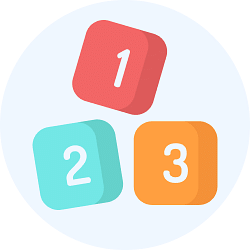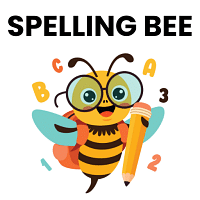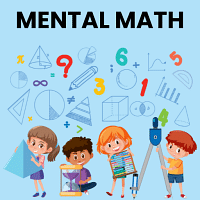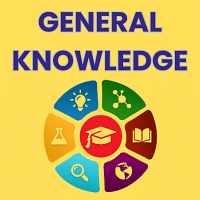Class 1 Exam > Class 1 Questions > In different languages, the number of consona...
Start Learning for Free
In different languages, the number of consonants vary from 8-10 to ______.
- a)40 - 50
- b)65 - 75
- c)90 - 100
- d)60 - 65
Correct answer is option 'A'. Can you explain this answer?
| FREE This question is part of | Download PDF Attempt this Test |
Most Upvoted Answer
In different languages, the number of consonants vary from 8-10 to ___...
Consonant is the non-vowel sounds which are articulated with complete or partial blockage of the vocal tract. In different languages number of consonants vary from 8-10 to 40-50 because one language may make use of a consonant dimension which other languages do not.
We describe and identify consonants briefly by using a three-term label indicating voicing, place of articulation, manner of articulation.
- As regards voicing, consonants are classified into voiced and voiceless. In the case of voiced consonants, the vocal cords vibrate while in case of voiceless consonants, the vocal cords do not vibrate at the time of producing the sounds.
- Regarding the Place of Articulation, consonants are divided into bilabial, dental, labio-dental, alveolar, post-alveolar, palatal, velar, glottal etc. On the basis of the articulatory points at which the articulators actually touch or are at their closest.
- Regarding the Manner of Articulation, consonants can be divided into stops, fricatives, affricates, nasals, rolls, laterals, frictionless continuants etc. depending on the type of obstruction caused by the narrowing or closure of the articulators.
Hence, we conclude that in different languages, the number of consonants vary from 8-10 to 40 - 50.
Attention Class 1 Students!
To make sure you are not studying endlessly, EduRev has designed Class 1 study material, with Structured Courses, Videos, & Test Series. Plus get personalized analysis, doubt solving and improvement plans to achieve a great score in Class 1.

|
Explore Courses for Class 1 exam
|

|
Similar Class 1 Doubts
In different languages, the number of consonants vary from 8-10 to ______.a)40 - 50b)65 - 75c)90 - 100d)60 - 65Correct answer is option 'A'. Can you explain this answer?
Question Description
In different languages, the number of consonants vary from 8-10 to ______.a)40 - 50b)65 - 75c)90 - 100d)60 - 65Correct answer is option 'A'. Can you explain this answer? for Class 1 2024 is part of Class 1 preparation. The Question and answers have been prepared according to the Class 1 exam syllabus. Information about In different languages, the number of consonants vary from 8-10 to ______.a)40 - 50b)65 - 75c)90 - 100d)60 - 65Correct answer is option 'A'. Can you explain this answer? covers all topics & solutions for Class 1 2024 Exam. Find important definitions, questions, meanings, examples, exercises and tests below for In different languages, the number of consonants vary from 8-10 to ______.a)40 - 50b)65 - 75c)90 - 100d)60 - 65Correct answer is option 'A'. Can you explain this answer?.
In different languages, the number of consonants vary from 8-10 to ______.a)40 - 50b)65 - 75c)90 - 100d)60 - 65Correct answer is option 'A'. Can you explain this answer? for Class 1 2024 is part of Class 1 preparation. The Question and answers have been prepared according to the Class 1 exam syllabus. Information about In different languages, the number of consonants vary from 8-10 to ______.a)40 - 50b)65 - 75c)90 - 100d)60 - 65Correct answer is option 'A'. Can you explain this answer? covers all topics & solutions for Class 1 2024 Exam. Find important definitions, questions, meanings, examples, exercises and tests below for In different languages, the number of consonants vary from 8-10 to ______.a)40 - 50b)65 - 75c)90 - 100d)60 - 65Correct answer is option 'A'. Can you explain this answer?.
Solutions for In different languages, the number of consonants vary from 8-10 to ______.a)40 - 50b)65 - 75c)90 - 100d)60 - 65Correct answer is option 'A'. Can you explain this answer? in English & in Hindi are available as part of our courses for Class 1.
Download more important topics, notes, lectures and mock test series for Class 1 Exam by signing up for free.
Here you can find the meaning of In different languages, the number of consonants vary from 8-10 to ______.a)40 - 50b)65 - 75c)90 - 100d)60 - 65Correct answer is option 'A'. Can you explain this answer? defined & explained in the simplest way possible. Besides giving the explanation of
In different languages, the number of consonants vary from 8-10 to ______.a)40 - 50b)65 - 75c)90 - 100d)60 - 65Correct answer is option 'A'. Can you explain this answer?, a detailed solution for In different languages, the number of consonants vary from 8-10 to ______.a)40 - 50b)65 - 75c)90 - 100d)60 - 65Correct answer is option 'A'. Can you explain this answer? has been provided alongside types of In different languages, the number of consonants vary from 8-10 to ______.a)40 - 50b)65 - 75c)90 - 100d)60 - 65Correct answer is option 'A'. Can you explain this answer? theory, EduRev gives you an
ample number of questions to practice In different languages, the number of consonants vary from 8-10 to ______.a)40 - 50b)65 - 75c)90 - 100d)60 - 65Correct answer is option 'A'. Can you explain this answer? tests, examples and also practice Class 1 tests.

|
Explore Courses for Class 1 exam
|

|
Suggested Free Tests
Signup for Free!
Signup to see your scores go up within 7 days! Learn & Practice with 1000+ FREE Notes, Videos & Tests.
























